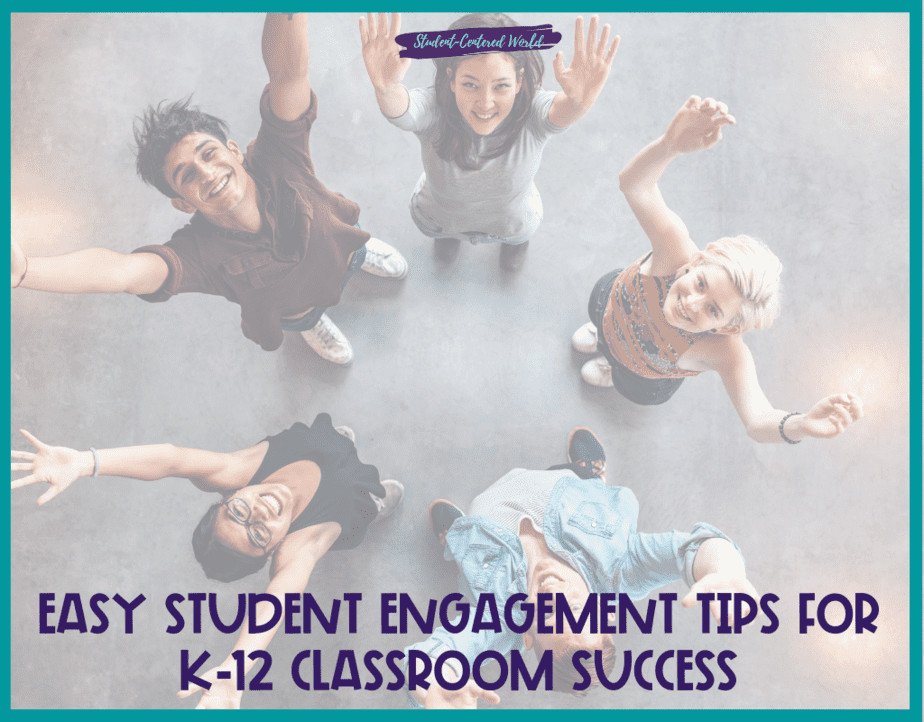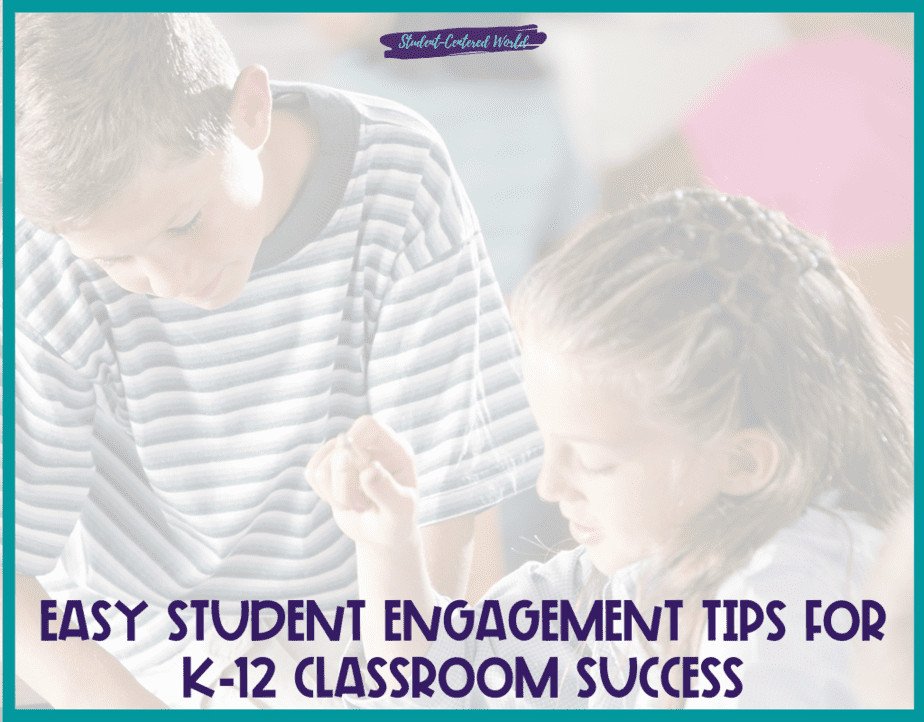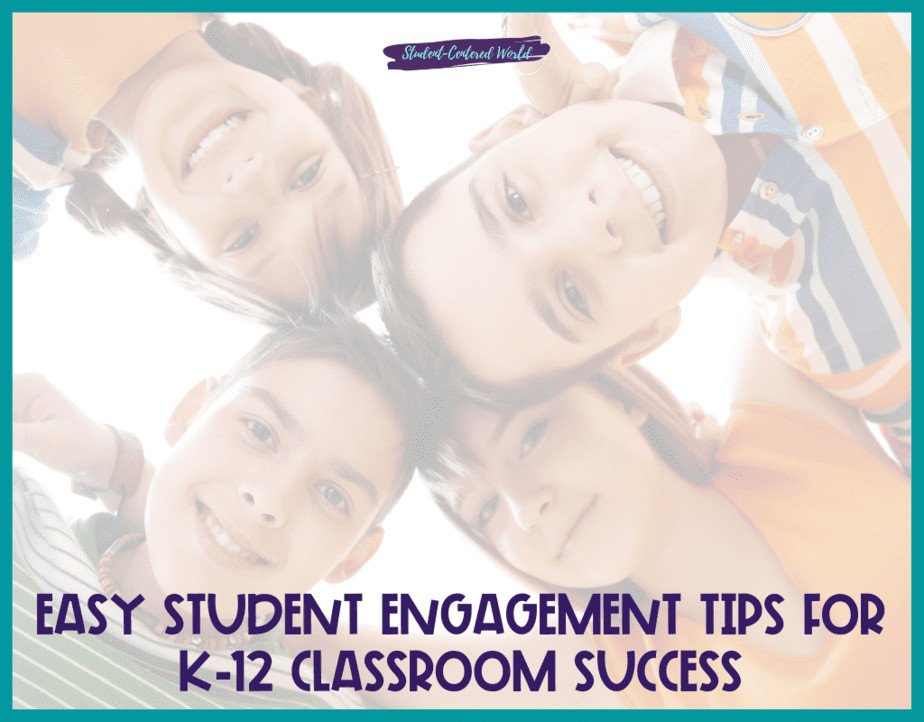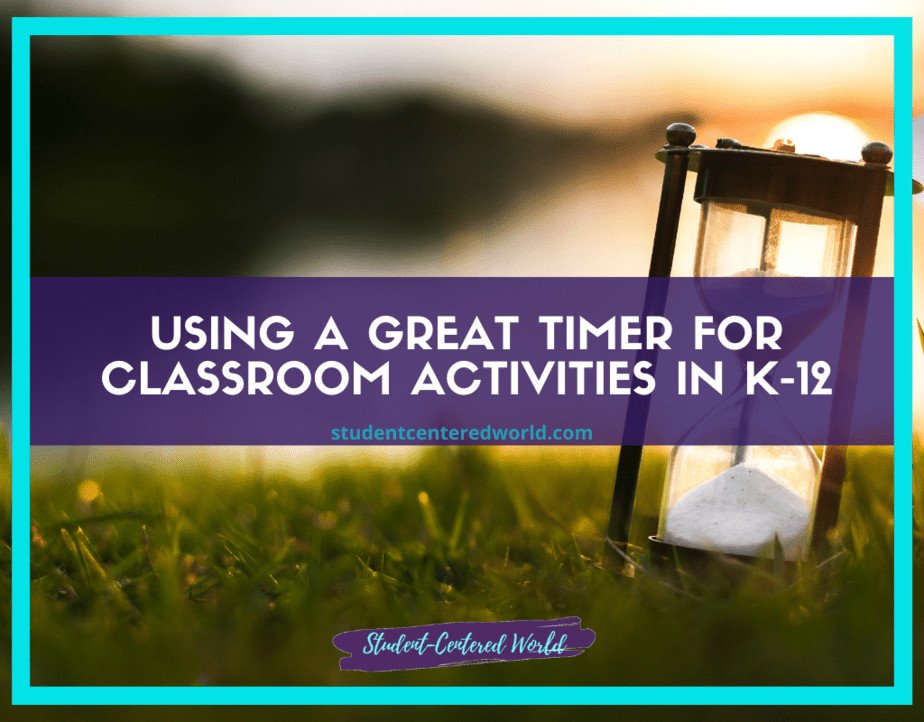Easy Student Engagement Tips for K-12 Classroom Success
Searching for student engagement tips that will help propel your classroom into what you have always envisioned is a daunting task. You see things that make sense, others that would “never” work, and it’s scary to try to implement something new (am I right?).
It makes me sad knowing that teachers who are trying to find student engagement tips consistently go through this same hamster wheel of information overload and then hesitancy to implement. Hopefully, this concise guide will help you not only find some great student engagement tips but also give you the confidence to give them a try.
Why Student Engagement?
Before we dive into the student engagement tips, let’s talk about the importance of what is called “positive disruption.”
So many times in education, we see an issue (let’s say low student engagement) and our knee-jerk reaction is to try and force more content at students. Let me ask you this:
“Do you generally become more excited and focused on work when your supervisor adds more tasks to your plate?”
No, of course you don’t.
Adding MORE doesn’t make the difference, but changing it up does.
In order to get results, we have to give our body a “positive disruption.” This means that every once in a while, we have to change things up and try something new.
When our brains are forced to adapt, it causes us to pay closer attention and focus harder. Yes, it’s hard to do this in an environment with so many distractions. But the good news is that we don’t have to wait for “tomorrow” or “someday.”
You can positively disrupt your students’ brains RIGHT NOW!

Positive Disruption With Student Engagement Tips
The following student engagement tips are meant to help you give your students that positive disruption they need to stay engaged. By the end of this post, I want you to feel confident enough to pick one of these creative ideas and try it on for size!
So with that in mind, here are some great student engagement tips you can use TODAY!
1. Show them some love
When we show our students some love (i.e. caring, compassion) it has a huge impact on their willingness to stay engaged.
Showing students some love can be as simple as telling them how great they are doing, but there are other creative ways to do it too.
For example, if you have a student who is easily distracted or always talking out of turn, see if you can get the rest of the class involved in giving them positive feedback.
Not only does this positively affect that one student but it also makes the other students feel good too! You can even involve parents if you are so inclined.
I like to keep a list of my students on a clipboard or someplace that I can easily access, but the students are none the wiser. When I have those little interactions with a student, I give a checkmark.
Why? This helps me see quickly who has gotten a lot of attention and who may need a bit more.
It can be argued that obviously, those students who have gotten the attention probably need it the most. While that is true, so many times it is those quiet or high-flying students that actually fall through the cracks because we can count on them to do the right thing. They need that encouragement, too, if we want to make sure they keep the appropriate drive for school and foster a love of learning for them.
2. Use “I” Statements
Using “I” statements within lessons can be a very powerful way of making sure students know what is expected of them.
For example, instead of saying “The room looks a mess,” you could say “I notice that the room is a little messy.”
When we use “I” statements it helps us take ownership over our feelings and in turn, gives students a great opportunity to do the same.
This accountability will help your students be more engaged in their academics and will give them a sense of pride when they see how much you care.
3. Use gestures & body language
If I had to only pick one thing on this list for student engagement tips, this would be it! Using your voice is so important but let’s face it…body language makes up the majority of what we communicate to others.
You’ve probably heard the promotion of smiling when you teach (and frankly, anyone following the old saying of not smiling until December needs to move forward into the 21st century with Generation Z!). The truth is, it does make for a more positive classroom environment but smile or no smile, using your body language effectively can help tremendously with student engagement.
Body language not only includes what you do with your mouth (i.e. smiling) but also how you use your hands, eyes, chest, and body stance.
You know the times when your students are not engaged…they are staring out the window or at their phones. While it can be hard to break this habit, you can use specific ways to help catch their attention. For example, try standing with one hip jutting out, looking like you are in a casual conversation and when they look to you, speak!! Not only will it get them engaged in what you were doing but it makes the environment more informal and if we know anything about student engagement, we know that relaxed students = learning!

Student Engagement Tips for the Disruptive Student
No matter how hard we try with the masses, there is always that one student who gives us a run for our money, right?
In an ideal world, we would be able to give these students the attention they need without the rest of the class suffering. Unfortunately, that can’t always happen but one thing you can do is to use gestures and body language effectively.
Whether or not you like to admit it, all students can be disruptive at times, but 1 out of every 5 kids is identified as having some kind of behavior disorder.
If you have any student engagement problems with specific students in your classroom (or even if they aren’t yours!), here are some strategies to help them feel more comfortable and help them focus on the curriculum at hand:
1. Verbalize
Not all students respond the same way to non-verbal communication so if you have one of those kids, don’t fear! Verbalizing is a great alternative for them. When that student is being disruptive, speak directly to him or her and explain what they need to do in order to have a better learning environment.
2. Minimize movement
It’s tough to focus when you are constantly moving; some kids can’t sit still for even 5 minutes.
If this is the case, try giving them something to do with their hands. They may like coloring or work on a puzzle or projects that require their hand-eye coordination. If there is another student that is not disruptive that would like the same task, you can put them in charge of monitoring their behavior.
Fidget devices work wonders for these students! So many educators scoff at this like these children are being “rewarded” for their behavior. The simple way of understanding this better is that if they are given something physical to do, like play with some of the items below (ad), it isn’t noticeable as if they were standing up and walking around the room causing a scene, and it helps their brain focus on the task at hand.
3. Do Some One-on-One Work
It is important to show every student that they are valued and even when they may be having a tough time, understand there is hope for them in the future. Work with them individually and see what it is that helps them the most.
When giving these students one-on-one time, try to work with them yourself or ask another teacher if they are willing to lend a hand with this student.
Remember, they are still learning, even if it doesn’t seem like it at times!

Confidence in Your Application of these Student Engagement Tips
It’s always scary to try something new in the classroom. It takes us outside of our comfort zone as a teacher and if it doesn’t seem to be working as we envisioned right away, we often throw it away, never to discuss it again.
Honestly, the best thing you can do to get comfortable applying these student engagement tips in your classroom is to give them a try….and give them a little time to sink in.
Don’t just think about it, don’t just talk about it – apply! You’ll be amazed at how much more successful you will become with the students if you do use all of this advice and what type of student engagement you are able to generate with the kids in your class.
Stop Driving the Teacher Struggle Bus
Are you struggling with student engagement, apathy, or keeping your class on track?
💫💫 There’s hope! 💫💫
Join my free teacher workshop “Choosing Choice” and in just 60 minutes, you’ll craft a practical plan to revitalize your teaching. Discover the magic of student choice in boosting engagement, gain quick implementation ideas, and explore strategies for year-long success.
Unlike overwhelming workshops, my approach guides you in real-time, providing more classroom options, reducing stress, and giving you more personal time.
Plus, you’ll earn a 1-hour professional development certificate and have 7 days of access.
Don’t miss this chance to transform your teaching; click below to secure your spot now!






